A few weeks ago I was spending few days at my in-laws. Like every night, as dinner was coming to an end, the same old ritual would start to unfold: plates would be removed, the table cleaned, and a box of Rummy tiles would appear on the table. Players would take their sit around it with a supply of drinks, chocolates, cookies, and cigarettes at the ready, and we would play game after game until late in the night when everyone is too tired to even push the tiles.

What is interesting here is that this game has always been more than just a game: it is a central component of our social fabric. During these evenings, we would talk about the game, of course, teasing each other, shaming a fool-play, or celebrating indecent luck, but not only: these moments would also be a fertile ground to talk to each other, about our lives, connecting with each other, unwinding the day. Participants would alternate, being respectively commentators or players, emotions would take over, the game often fading in the background as players mechanically throw their tiles on the board. The game would become an accessory and we’d be focusing on what is the real purpose of these gaming nights: spending time together.
I realized that these kinds of social connections over a game have been a reality for most of my life. I have spent countless sleepless nights exchanging Tarots hands or refining my projection skills on variants of Belote (France national game) with French friends. I have pushed innumerable Poker chips over a bottle of whisky in Australia, and no day in the rice fields could end without rounds of Koi-Koi in Japan’s countryside. And as I’m describing my own experiences, I’m fairly confident you can yourself remember having lived similar moments. It could have been playing Mahjong in China, unfolding games of Ronda in Morocco, Durak in Russia, or Gin Rummy in the US, or perfecting your tricks at Euchre (the game that introduced Jokers in modern card games!) in Canada. Strange no? Actually, not so much.
Throughout the ages, in every culture and every country, games and the primal play component have always played a central role in society. Huizinga, in his famous book Homo Ludens even put the play element as a key-piece of the formation of cultures and societies. And games have served an infinity of roles, from arts, laws and rules, war and competition, and of course… socialization.
“Our point of departure must be the conception of an almost childlike play-sense expressing itself in various play-forms, some serious, some playful, but all rooted in ritual and productive of culture by allowing the innate human need of rhythm, harmony, change, alternation, contrast and climax, etc., to unfold in full richness.”
Johan Huizinga
The history of games and their evolution is a fascinating one that would deserve a book in itself. One that is deeply anchored in human migrations and trade routes, spread through communities and societies, adapted to repressions and vastly different social constructs, gained traction as printing and mass-production technologies appeared. It’s fascinating to see, for example, how card games emerged in China a thousand years ago, spread through Europe thanks to the Silk Road routes before being imported to America during its colonization 500 years or so later. Of course, this history isn’t a linear one, but a gigantic family tree made of a dense network of connections, and we can trace back most games to century-old ancestors. Gin Rummy, for example, one of the most played card games in the world today, is an evolution of the original American Rummy, itself directly related to the Mexican Conquian that took its roots in the Chinese Khanhoo and the multitude of Mahjong variants! This history actually help us today categorizing card/tile games in big branches, or categories: Matching games, Trick games, Fishing games…
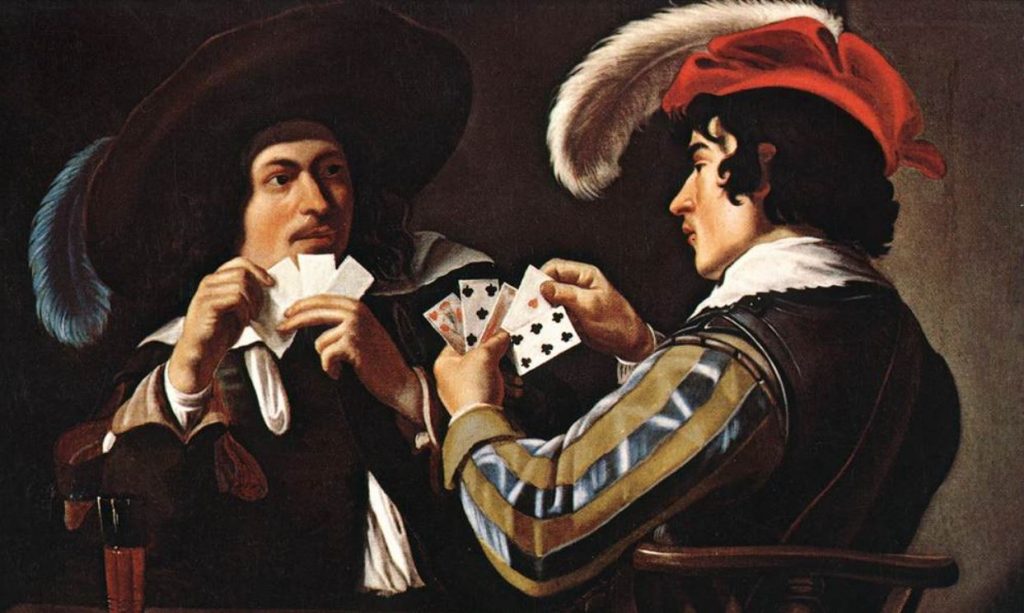
And do not get me started on how the decks and cards/tiles themselves evolved while passing through different cultures… Do you know that the most common design of modern playing cards is a 15th-century French design (recognizable on the painting The Card Players in 1600’s) because this design has been the first one created to be mass-produced (2 colors and simplified patterns made it stencil friendly)? Or that Nintendo was first and foremost a Hanafuda cards manufacturer in 1889? And that the design of these flower cards, even though based on the Spanish-suited cards’ design (imported by the Portuguese mid 16th century) became completely abstract and numberless due to the Japanese gambling prohibition that kept baning card decks and forcing creators to hide more and more of their gambling potential (and create an infinity of games variants at the same time)?

But I digress, and this introduction is becoming confusing…
What fascinates me in most of these games, is how they have stood the test of time. They have been played for centuries, and they are played widely, every single day, for hours at a time by players that won’t ever get enough of it. Surely this is worth investigating, as I don’t believe many games today can reach such achievement! Who knows… We may uncover some rules and directions to strengthen our own games!
I started with a postulate: these games are more than just games. They are, at their core, social enablers. Games that transcend their core play-factor and use their magic circle as a way to create, strengthen and spread social bonds.
And here is the question I asked myself: can we extract similarities from all these games? Some form of framework that is shared between games as different as Bridge, Canasta, or Poker?
In this article, I want to present you with 8 key-components that I believe are at the heart of these games, and the essentials parts that make these games so damn elegant, social, and efficient.
Non-Deterministic and Luck Heavy
Let’s start with the most obvious aspect these games share together: their non-deterministic nature. Compared to deterministic games like Go, or Chess, the addition of Luck brings uncertainty and unique situations. It evens the playfield in terms of skills as all players are equal in front of Lady Luck.
All these games are very luck-heavy: as bad you can be playing your cards, betting, or bluffing, a perfect hand will always ensure victory.
These games require skills that are less about mastery and domination over other players than they are about controlling luck, and make the most with what you are dealt with. This creates a fertile ground for social interactions as it gives hope to newcomers, keeps veterans careful, and opens for twists and always fresh situations (the infamous “Beginner’s Luck”).
This aspect is of course the easiest to leverage. It is found in almost every board-games in a form or another (even seemingly “serious” games like Scrabble are known to be 15-20% luck) and very easy to implement in any video game: XCOM2, for example, really embraced this Skill-Luck duality to the point of including a rare achievement called “Beginner’s Luck” asking players to finish a mission with a team of rookies, and by doing so proving they can control bad-luck and prevail no matter the odds.

Hidden-Information Games
Hidden-information games are games where some form of information about the game is hidden from players (crazy right?), in opposition to perfect-information games, like Chess, where the entirety of the game’s information is always available to all players. There are many different segmentations of hidden information: information can be hidden between players, your hand of cards for example, or hidden to all players by the game, like the face-down community cards in Texas Hold’em.
You may rightfully argue that the medium itself (cards, tiles) embeds this aspect in its DNA. Cards’ values are meant to be visible from a single side and provide you with information that no other player has, and it is but normal for games to have evolved with this component at their core. True, but there is an infinity of ways to hide information, and each provides its own dynamics.
In games like Bridge, or Belote, not only information is hidden between players of the same team (the rules only allow a very restricted form of verbal communication), but the auction phase implies a partial reveal of one’s cards. This information will be key to the teammate, but also to the opposing team that can plan accordingly.
Texas Hold’em has a form of partial reveal through betting, but since players can win a round without using their cards (other players folding) this partial reveal can be deceitful. The community cards (the Flop, Turn, and River), a piece of game-centric hidden-information, refresh the state of the game for all players at once, allowing for tension and twists until the very last card is revealed.
Partial reveals can also be forced, like when players either go fishing in Mahjong (stealing a discarded tile is only possible if they reveal the meld where the tile will be used) or want to expand their possibilities in Rummy (player’s game need to be exposed to be allowed to complete opponents melds).
Information flow is at the heart of these games, and why designing it with care is paramount. We can separate it into 2 categories: the textual part of the game, where players interact with each other based on the revealed information to all, and the subtextual part of the game, where players try to gain strategical information and advantages based on the cues left by others.
Strategy video games have been the most prolific genre on hidden-information, with unique implementations of features like the fog of war (in my list of the most influential gameplay mechanics of all time!) as early as in 1977 with Empire.
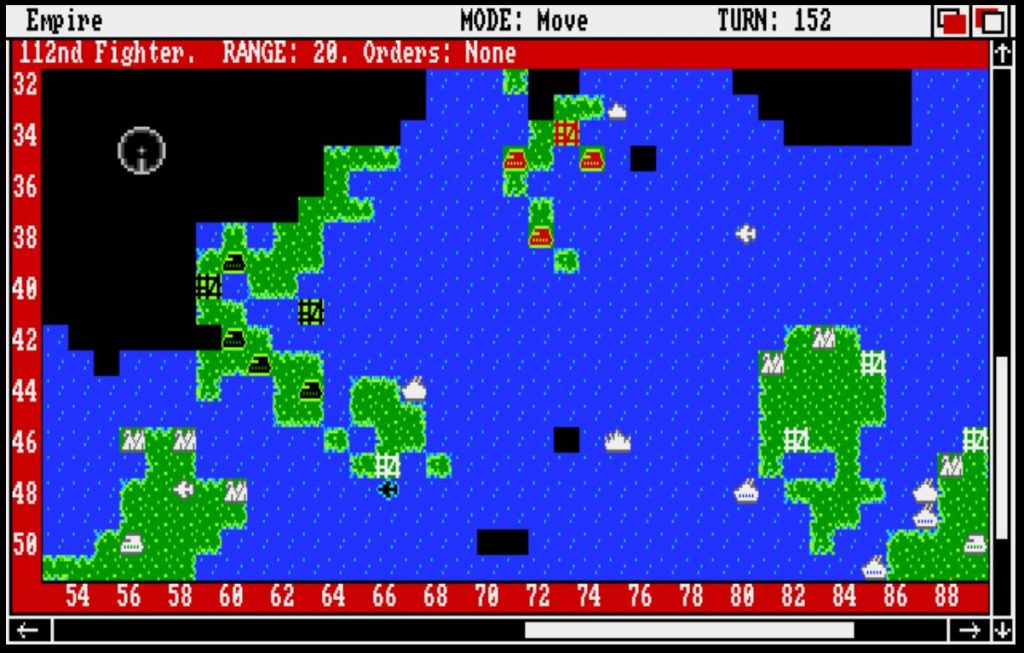
But these games aren’t what interests us today. Let’s face it, hiding-information in a local multiplayer game is the most difficult thing to achieve due to the lack of a player’s corner (there is but one screen). The best examples of this component in local video games, unsurprisingly, come from Nintendo.
The WiiU particularly comes to mind has it brought a second screen (and thus a player’s corner for one player) in play! Games like Luigi’s Ghost Mansion are a wonder of asymmetrical gameplay for example:
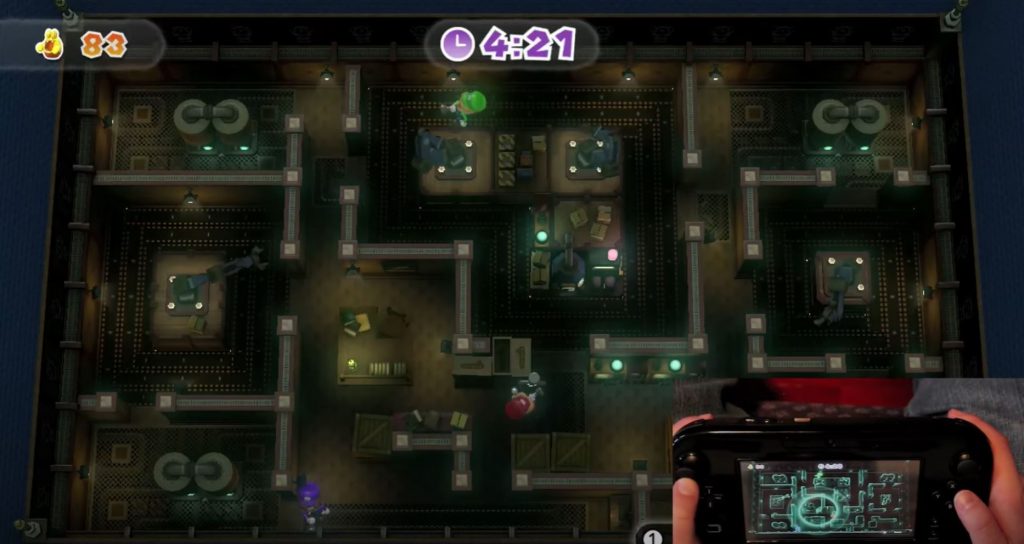
But it is far from the only one: the Mario Party series for example has a phenomenal amount of mini-games crafted around hidden-information: using camera tricks to hide players’ movements or using each player controller as a dedicated player’s corner (hiding their inputs from each other). There are plenty of reasons why Mario Party is among the most polished social video game around, and the information flows mastery of Nintendo’s designers is to be reckoned with.
Easy to Learn / Hard to Master
This one won’t be a surprise to any of you. The design goal that many video games try to abide by, being welcoming to newcomers (acquisition) while providing enough depth for veterans to stay engaged (long-term retention), is one that is shared by all these games. I can teach you Belote in a game or two, but it will take you years to master the game.
What is interesting is that the layers of complexity do not have to come necessarily from the game itself: the most complex, and virtually infinite, one being the human factor. This allows games like Werewolves or Mafia to provide endless replayability with extremely simplistic rules, and classics like Poker to keep growing their player base and evolve.

Porous Ruleset
Talking about rules, these timeless games are all very flexible. There are as many variants of Belote as there are regions in France, and every night of Rummy cannot start without everybody agreeing on a unique ruleset beforehand. Mahjong players may decide to play without Bonus tiles, Whist players without Honors, Couinche players without combinations…
The reason for this flexibility is to open the game to player’s appropriation. These changes may reduce the luck-factor (usual among Veterans players or during competitions), speed up the game, or encourage or not player’s influence on each other.
Many video-games opened their rulesets over the years for this reason (and to expand the lifespan of the game): games like Worms or Bomberman became famous for their extreme flexibility and, more recently, this has been a centerpiece of the Super Smash Bros series’ design (do you play with or without items?).
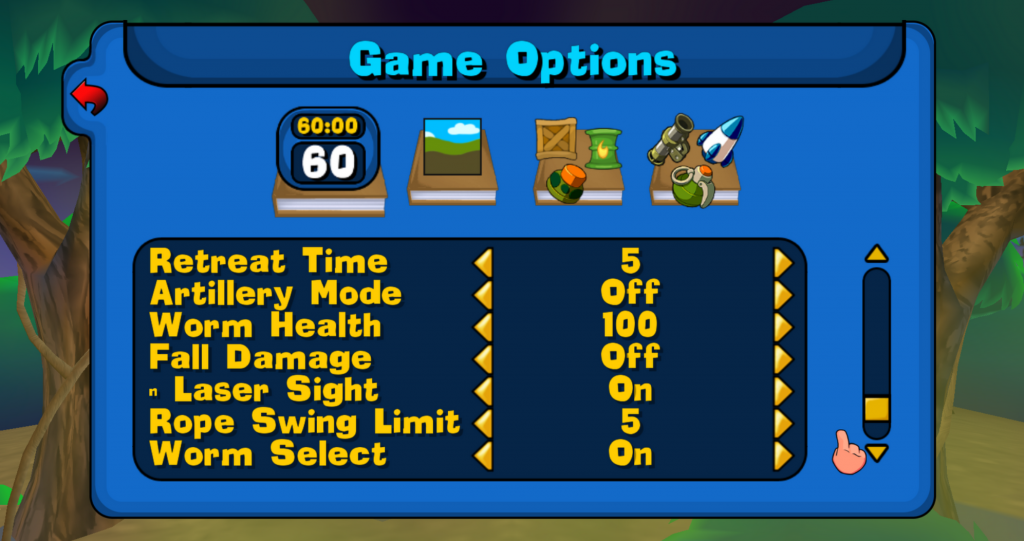
Catch-up Mechanics
This one is an interesting one. Every one of these games has catch-up mechanics embedded deep inside their ruleset. And most of the time, we aren’t talking about small bonuses, but game-breaking situations!
In Rummy, if the opening card from the game is a 1, the game will count double for everybody (both in positive and negative points). If a player closes with a 1, they double their points. If both situations happen, this becomes a 4x multiplier that can be enough to close a game in a single round!
In Belote and most Contract games, as the auction period happens, an opponent can counter the current bid, basically saying “No way you can make this number of points” (usually hitting dramatically the table with a fist). The dare comes with a double-point game. If the original player disagrees with the counter, they can counter the counter, a “watch me” moment that will quadruple the score of the game to be played (usually hitting even harder the poor table).
In Poker and most gambling games, an “All-in” can completely redistribute the strengths and wealth at play. In Koi-Koi, managing to pass 7 points (a feat in itself) will instantly double your score… The examples are legions.
What particularly interests me, on top of how brutal these catch-up mechanics are, is the fact that players control their activation. They are all extremely luck-based (the cards or tiles you are dealt with) but require players to take an enormous risk to pull them out: keeping a 1 in your hand in Rummy without closing the game with it will strongly penalize you. An “all-in” can get you broke in a turn. A counter may backfire and send you back at the bottom…
All-in-all, all these games follow globally the same logic:
- 1. They all embed impactful catch-up mechanics.
- 2. The opportunities for these moments are almost entirely based on luck.
- 3. These catch-ups are fair and accessible to all players evenly.
- 4. To activate, they require a player’s action and are dangerous.
These 4 rules are, to me, what generate the best outcome in social games:
- 1. It’s not over until it’s over: there is always a chance to turn the tide and win.
- 2. These catch-ups can be pulled off by newcomers too, giving a chance to all to win a game. They generate epic twists, fails, and stories.
- 3. There is no cheating or favoritism to “force” a tighter result. Some games will be tight, others will be dominated by a specific player.
- 4. Whatever the amount of luck involved, the final decision stays player-based and comes with a high risk-reward. It re-centers the moment on the player skills and decision-making abilities instead of pure luck.
In terms of video-game applications, there are excellent examples of these rules: Items in Super Smash Bros. or crates in Worms.

There are also less good examples in my opinion: Items in Mario Kart violate rule 2, 3, and 4. (not based on luck, but on rank, without consequences and no-brainers to use), bonus stars found in hidden blocks in Mario Party violate rule 4 (no risk-taking, making it feel undeserved and globally disliked by the majority of players).

Round-based games
Another aspect that these games have all in common, is that victory isn’t decided by a single game, but by a multitude of small and fast rounds. In luck-heavy games, this ensures that players can recover from a bad run, but not only: as games progress, the gap between players and their skills grows exponentially, to a point where it becomes hopeless for the weaker players. Having small rounds allows to even the field at regular intervals while still tracking previous wins, giving weaker players a chance to catch-up, and keeping strong players on their toes.
In Monopoly, the outcome of the game can be determined after 2 rotations of players around the board. In Catan, a bad starting placement will ruin your game. Of course, catch-up mechanics can alleviate that, but as the success range between players grows, these catch-up mechanics will feel more and more unfair. Mario Party’s infamous catch-up systems are plagued by this component in my opinion: it is less about how strong they are than it is about negating players’ long-time progress, especially when an hour of steady progress can be annihilated by a lucky, undeserved moment from another player right at the finish line.
Instead, all these games allow for some epic rounds, where the number of points can explode, or when a perfect hand is simply unbeatable. It opens the field for some truly epic moments (the ones that make the stories) without ever risking breaking players’ engagement as other rounds will unfold.
Games like Stick Fight the Game really embrace this component, allowing players to really “get lucky” with broken items (damn you snake guns!) and unfair starting positions. In the end, since rounds are fast and the victory is decided on the number of rounds won, the impact on the game is lessened and the players’ skill will truly matter in the long run.
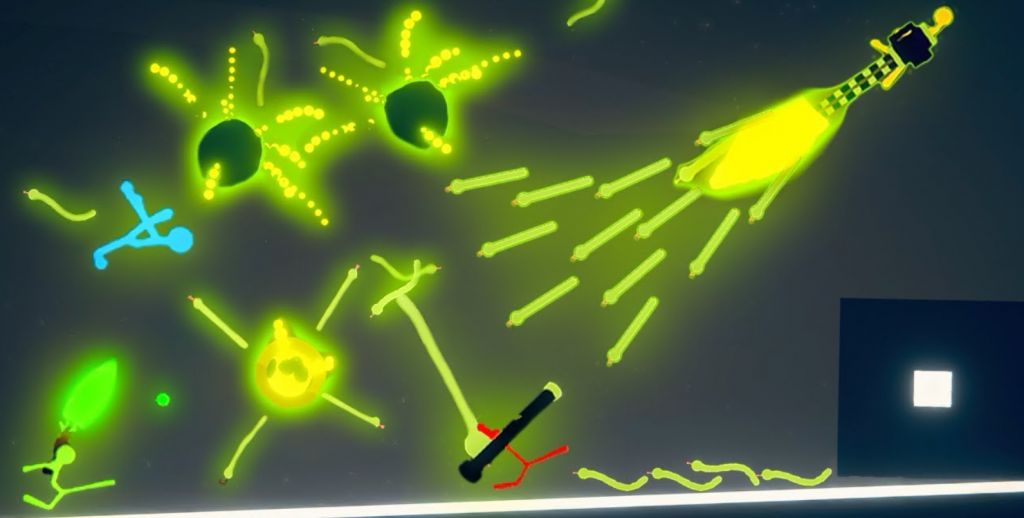
Variable Pacing / Decision making
Games, in their social form, create unique moments: the magic circle of a game brings ever-changing grounds for social interactions to emerge and flourish (teasing, collaboration, competition, betrayal, help, etc.).
But for these social moments to appear, the game needs to allow them to do so, and we are now faced with a complex opposition. If the game is too light at its core (take Uno for example), it won’t provide long-term goals and engagement for the players. If it’s too deep, the mental load of players will be so dedicated to the game that the social component will dwindle.
All the games I mentioned until now managed to find the sweet spot, alternating moments of high and low involvement. In Tarot, most turn will be a non-decision for players choosing which card to play. In Mahjong and Rummy, the choice of the tile to discard during your turn will represent the most demanding tactical decision, and only represent a fraction of the round. In Couinche, the auction phase is the real strategical moment, the rest of the game often being simply unfolding the conclusion of this phase.
Downtime has a key-importance in what creates these games’ unique energy. It can be embedded inside the gameplay or imposed through physical limitation (players playing in turns, cards to reshuffle, board to reset, etc.)
Video-games tend to remove these downtimes as much as possible, as they are considered dead moments, and this is a mistake: they are what allows the personal narrative of the group to unfold. Nintendo, as always, often embraces these moments, like in Mario party where the board play (throw dice, move around, etc.) is slow in pace and the game as a whole carefully controls the player dynamic: highs in mini-games, low in progression.
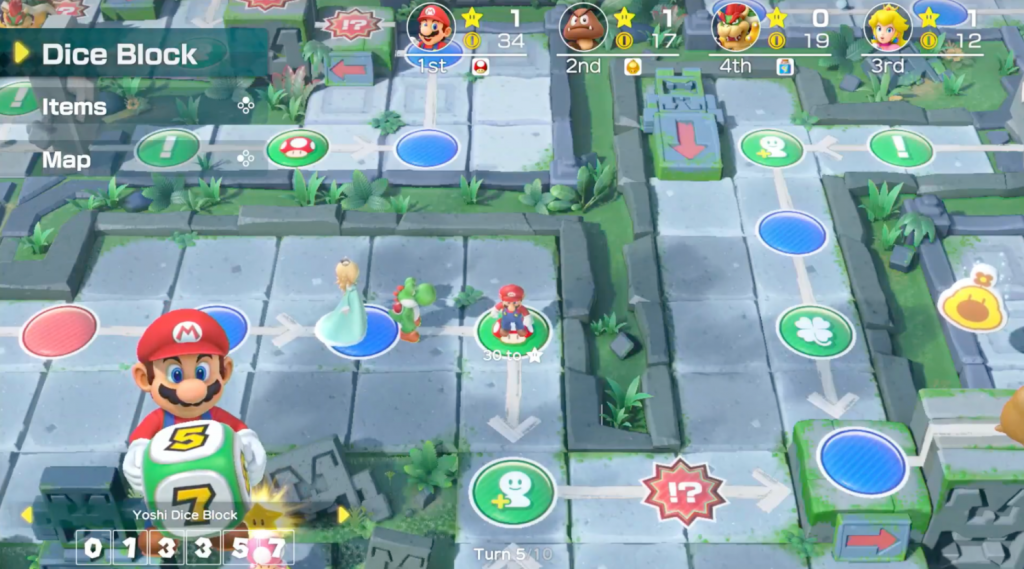
Solo-Play vs. Multiplayer-Play
This last component is actually a surprising one to me, especially as it seems to conflict with the “Easy to learn / Hard to master” one: in all these games, the gameplay interactions between players are actually very contained, which may sound counter-intuitive for a social game.
Take Mahjong for example. The majority of the game is unfolding in isolation for each player: draw a tile, strategize which ones to keep and which ones to discard based on the game’s state, and try to create a winning situation for yourself: no players can steal your cards, look at your game, or gang up against you.
In Bridge, the auction phase is the only one where players will really influence each other. In Poker, the bidding is at the core of the social interactions. In Canasta, players can fill each other combination but will otherwise play their own game. None of these games will ever allow situations like in Risk where players can decide to unite against the strongest player, virtually denying them the victory.
This is a very interesting dynamic to acknowledge: players are essentially playing their own success, against the game itself, for most of the play. The impact of players on each other is very contained and regulated.
To me, this is what makes these games feel fair: the social part exists, but never overpower the raw skills of players making the best with what they have been dealt with (and most of the time prevailing if luck isn’t too much against them).
Tetris 99 and auto battlers games are what I believe to be the best representation of this component in multiplayer video games, where a victory or a defeat is always deserved.
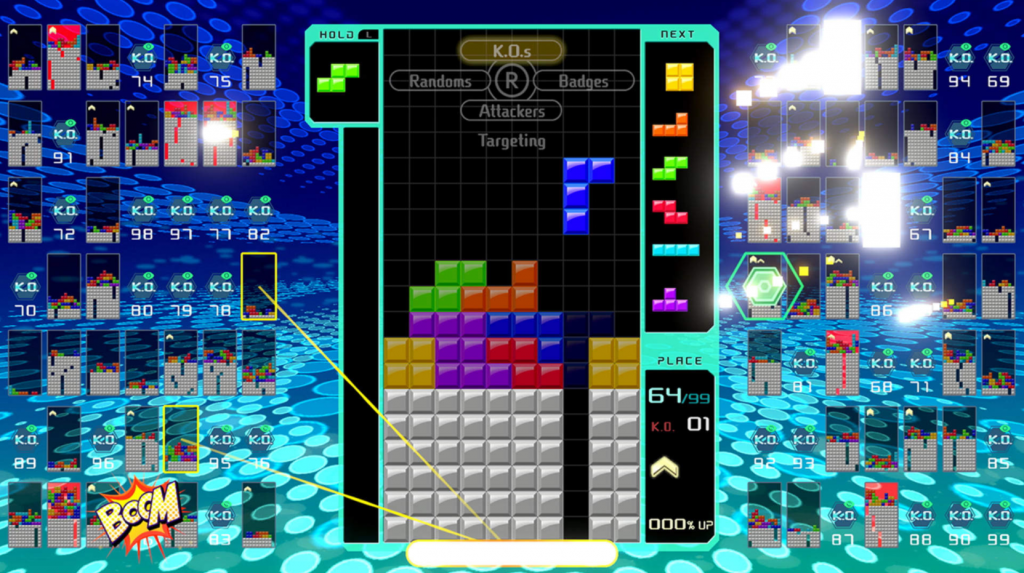
Take-Away
Looking back at everything we discussed here, we can identify 8 directions to make multiplayer games more social, engaging, welcoming, and replayable:
- Have luck as a central component in your designs: players will have to control their luck using their skills and experience with the game.
- Design carefully the information flow between your game and each of your players to promote social play and players’ interactions.
- Be welcoming to newcomers, but provide enough depth for veterans to stay engaged: social depth is the most powerful one and virtually infinite.
- Offer ways to adapt your game to each group of players’ needs and preferences (luck factor, timing, social interactions…): design for appropriation and let the players find their own fun within.
- Open your game to powerful comebacks: these catch-ups must be luck-based, fair in opportunities, be actively triggered by a player, and contain a strong risk/reward component.
- Consider breaking your games in segments, or rounds: they even the gap between players, allow for broken, powerful play without ruining the long-game, and keep your losing players engaged and your winning players wary.
- Design carefully the dynamic and mental cost of each moment of your game: difficult decisions and highly demanding moments will ensure engagement while downtimes will allow players to build their own social narrative around the game.
- Carefully identify and design the moments when players are playing against the game, and when they are actively playing against each other: it is key in the game’s perception of fairness and players dynamic.
Of course, these statements are by no mean the magical recipe to multiplayer games, and there is an infinity of possible directions you may take (competitive, deterministic games like Go or Chess are perfect examples of the complete opposite) but they are providing us with powerful insights, backed by centuries of successful games, on what could help us bring more interactions and dynamism between players in our games.
Games have always been more than just entertainment and played a key role in the evolution of societies, social groups, and the individualities within them. Continuing to build on the legacy left by our ancestors (and play their games) will hopefully help create a more bonded, social, and human future.
One game at a time.
Do you want to get regular quality articles on Game Design and join an awesome community of devs and designers on our private Discord to discuss design, learn, and review each other’s games? Then consider supporting GDKeys:
